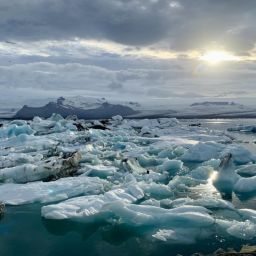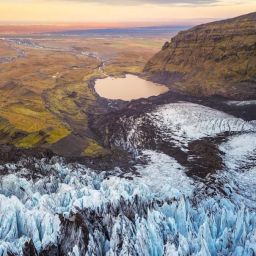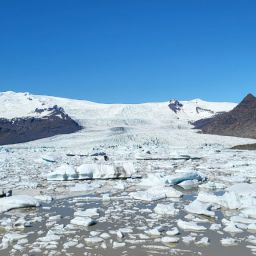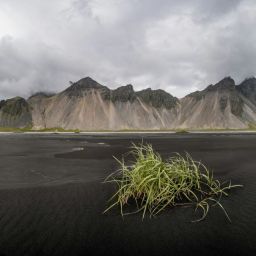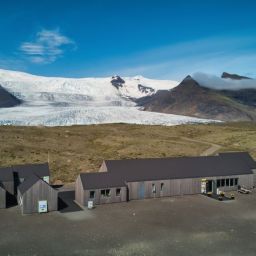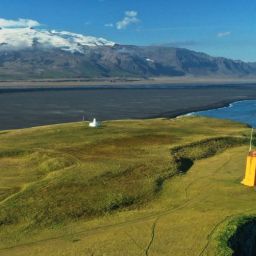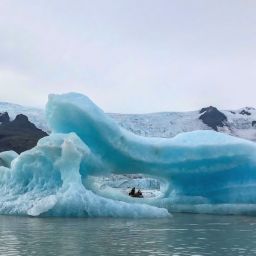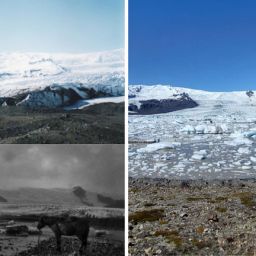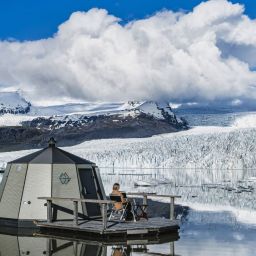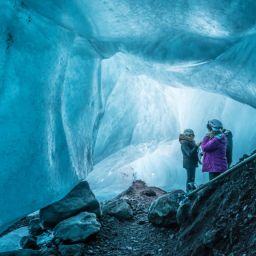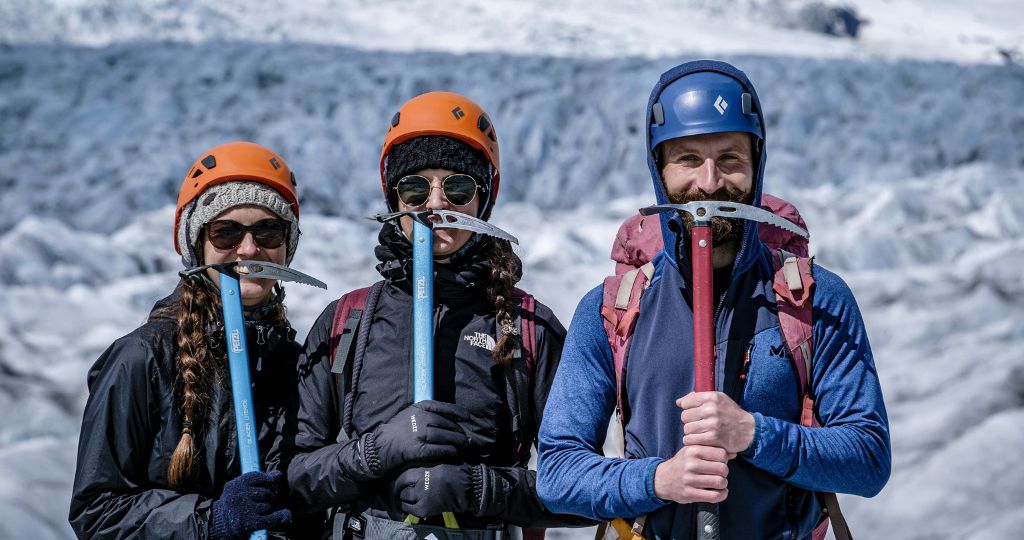
Imagine stepping on to a frozen landscape that has been sculpted through centuries of ice, you feel the crunch of the ancient ice underneath your feet, and all around you there are different colors of blue and white, and deep crevasses. Welcome to glacier hiking!
Iceland is truly the land of fire and ice. Around 11% of Iceland’s surface is covered with glaciers, and close to the glaciers, or even underneath them, you will find 41 active volcanic systems connected to the island. The largest glacier in Iceland is Vatnajökull, also the largest glacier in Europe. Other larger glaciers are e.g. Langjökull, Mýrdalsjökull, Eyjafjallajökull, Snæfellsjökull, and Hofsjökull. Iceland’s glaciers hold enough fresh water to lift the world’s oceans by a full centimeter.
Glacier hiking is one of the most popular “to do’s” in Iceland and should not be missed. In this article we will go through the essentials when it comes to glacier hiking in Iceland.

Why Glacier Hiking is an Unforgettable Experience
Hiking on a glacier is not like hiking on any different patch of snow. It is believed that Iceland’s current glaciers have been forming for the last 2500 years. Glacier hiking offers a profound connection to Iceland’s elemental forces, providing an experience unlike any other:
- The Magestic Glacier Ice: As mentioned above, Iceland is home to some of Europe’s largest glaciers, where Vatnajökull glacier takes the throne. Stepping onto one of these frozen giants opens up a world of ever changing beautiful landscapes and formation. There you will witness deep crevasses, incredible ice sculptures, and vast expenses of ice that stretches as far as your eyes can see. It’s truly humbling to experience the sheer scale of the glacier ice.
- A Sense of Adventure: It truly is an adventure to hike on a glacier. It’s not a stroll through the park, it’s an activity and an exploration. The landscapes are living and dynamic. It’s thrilling to hike the uneven terrain, crossing ice bridges, and learning to use an ice axe. A glacier hike offers you a true “off the beaten path” experience for the true adventurer.
- Peace and Quiet: Despite the size of the glaciers in Iceland, many parts offer an incredible sense of tranquility. There you can get away from the main tourist areas and experience profound silence, broken only by the sounds of your steps and the crack of the ice. If you select to go with an operator that has an exclusive access to certain areas, like a glacier hike on Fjallsjökull glacier, this feeling of peace and quiet is even more profound.
- Connect with Nature: A glacier hike offers you a great way to connect deeply with nature. You will be reminded of the immense power and scale of nature. You will experience the ongoing process of creation and erosion, offering you a unique perspective on geological time and climate. It’s a chance to fully immerse yourself in Iceland’s raw, untamed nature.
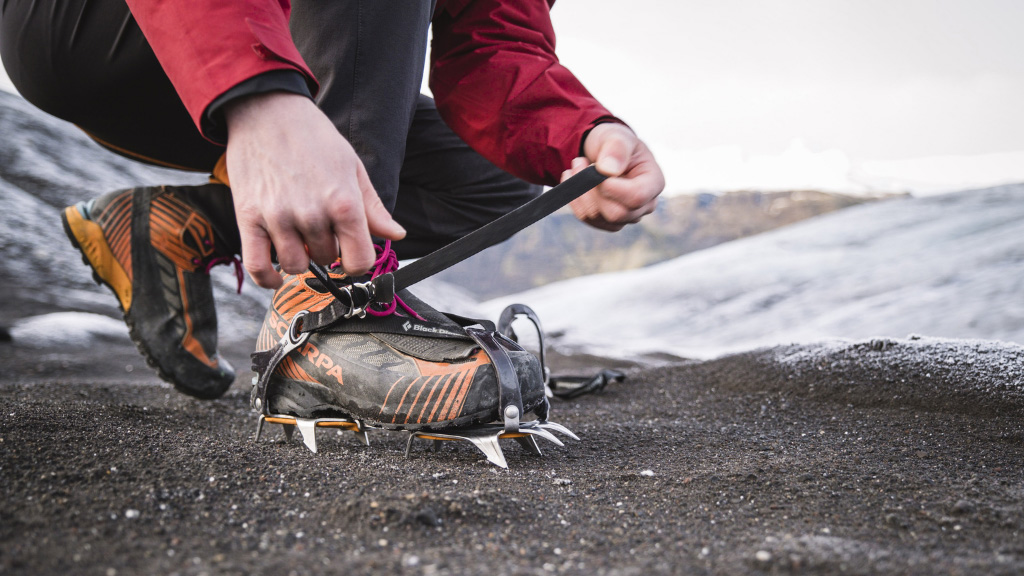
What to Expect on Your Glacier Hike
While each glacier and tour operator offers a slightly different experience, here’s a general overview of what your glacier adventure might entail.
- Guided Exploration: Hiking on Iceland’s glaciers must always be done under the guidance of certified and experienced professionals. These guides possess essential training in glacier safety, navigation, and rescue. Their expertise allows them to discern safe paths across the ice and ensures both the security and enjoyment of all participants. Moreover, their extensive knowledge of the glacier’s geological makeup and historical significance enriches the experience with an educational element.
- Essential Equipment Provided: You won’t need to bring your own specialized gear. Tour operators provide all the necessary safety equipment, which typically includes:
– Crampons: Metal frames with spikes that attach to your boots, providing traction on the ice.
– Ice Axe: Used for balance, support, and occasionally for self-arrest on steeper sections.
– Helmet: For head protection.
– Harness (sometimes): Used for roping up in certain conditions or for safety. - Walking on Ice: While it might sound daunting, walking with crampons is surprisingly intuitive after a few minutes of practice. Your guide will teach you the basic techniques. The terrain can be uneven, with gentle slopes, small humps, and occasional slippery patches, but most tours are designed to be accessible for those with a moderate fitness level.
- Varied Landscapes: Expect to see a variety of ice formations. You might navigate around deep blue crevasses (fissures in the ice), pass by impressive ice walls, or marvel at unique ice sculptures carved by wind and meltwater. If conditions allow, your guide might point out moulins (vertical shafts in the ice) or small ice caves.
- Duration: Most standard glacier hiking tours range from 3 to 5 hours in total, with approximately 1 to 3 hours spent directly on the ice. This allows for ample time to walk, take photos, and absorb the breathtaking surroundings.
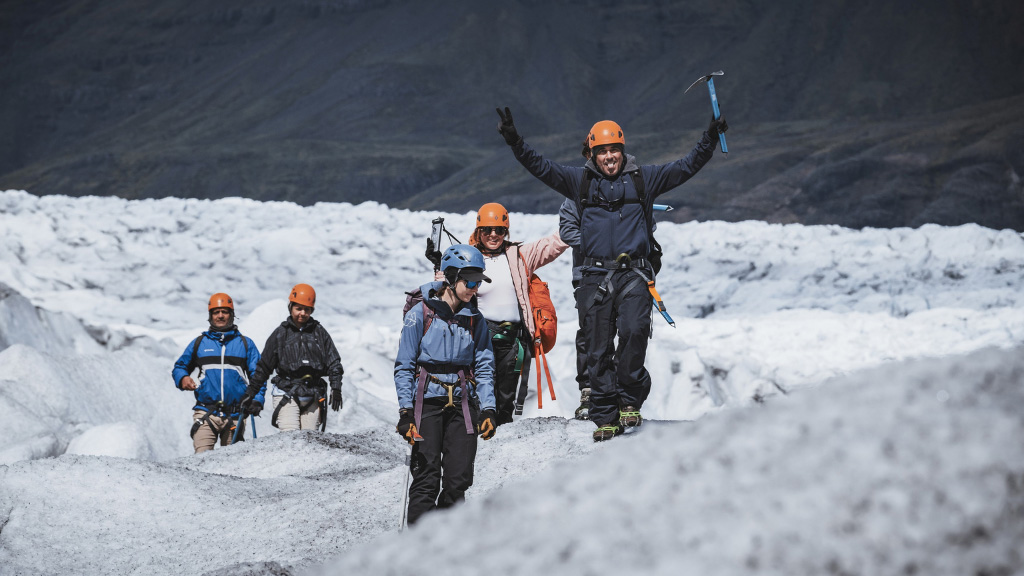
Preparing for Your Glacier Adventure: Practical Tips
Proper preparation ensures a comfortable and safe experience:
- Dress in Layers: This is the golden rule for Icelandic weather. Wear multiple thin layers that you can add or remove as needed. Avoid cotton as it absorbs moisture and loses its insulating properties when wet.
– Base layer: Moisture-wicking material (merino wool or synthetic).
– Mid-layers: Fleece or down for warmth.
– Outer layers: Waterproof and windproof jacket and trousers are essential to protect against the elements. - Footwear: Sturdy, ankle-supporting hiking boots are crucial. They provide the necessary support for uneven terrain and are essential for safely attaching crampons. Most tour operators offer boots for rent if you don’t have your own.
- Essentials to Bring:
– Backpack: To carry your layers, water, and snacks.
– Water Bottle & Snacks: Stay hydrated and energized.
– Sunglasses: Even on cloudy days, the glare from the ice can be intense.
– Sun Cream: Protect exposed skin from the sun’s reflection.
– Camera: Fully charged, to capture the incredible views!
– Warm Hat & Gloves: Even in summer, temperatures can drop on the glacier. - Best Time to Go:
– Summer (June-August): Milder weather, longer daylight hours, and generally easier walking conditions. You might see more surface dirt/ash.
– Winter (November-April): Offers the magical opportunity to combine glacier hiking with ice cave tours (as blue ice is more prominent and stable). Temperatures are colder, and daylight is shorter.
– Shoulder Seasons (April-May, September-October): Can offer a good balance of milder weather, potentially fewer crowds, and beautiful light conditions. - Choosing a Tour Operator: Research reputable companies with excellent safety records. Look for operators with certified guides, small group sizes (for a more personal experience), and clear communication about what’s included.
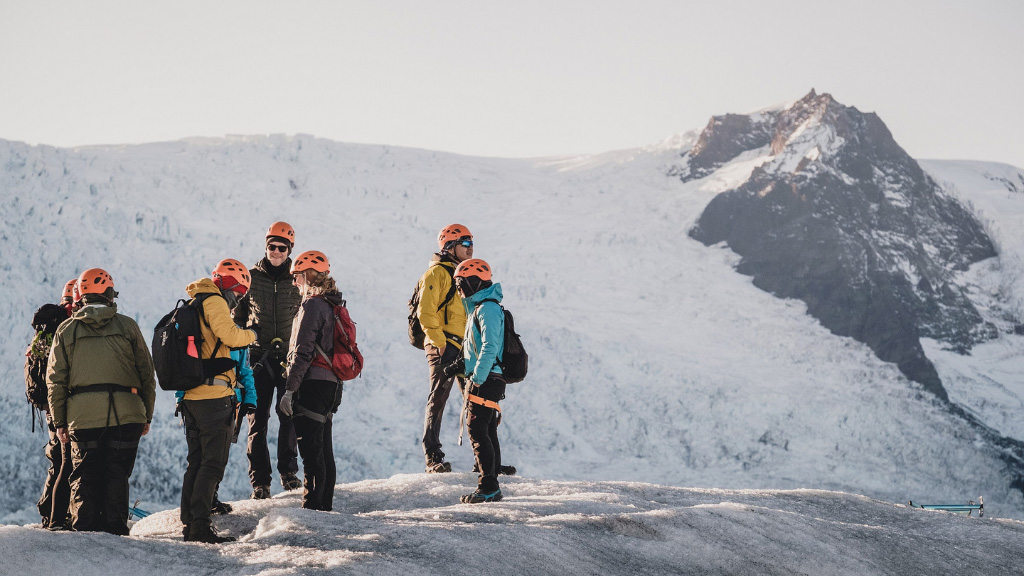
Embrace the Ice
Glacier hiking in Iceland is more than just an activity; it’s an immersion into an ancient, powerful, and utterly beautiful world. It’s an opportunity to challenge yourself, witness incredible natural wonders, and create memories that will last a lifetime. So, pack your layers, prepare your sense of adventure, and get ready to unveil the magnificent frozen giants of Iceland. Your unforgettable journey awaits!



